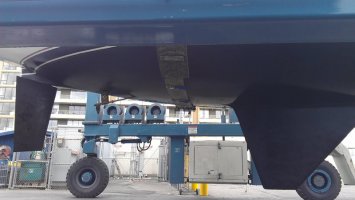Well, awareness is not exactly the same as worry, or at least shouldn't be. In large measure issues like keel bolts tend to build in the mind into gigantic structures. Same with the rig, the shrouds, the rudder, the steering and any unidentifiable leak.
I had goop around the keel nuts just as Ryan described. Gone now, after many cleanings for cosmetics. My washers are rusty, too, after 29 years.
At first haul-out my keel-hull connection was fairly ugly. The yard shrugged, and filled it with fairing compound.
So, I have rusty washers, a small "leak" I still can't find (after sailing only, no pattern to it), and a cosmetic keel fairing.
This did give me some concern en route Hawaii, when the boat was worked very hard in strong winds for weeks at a time. The strains on the hull and keel are hard not to think about, given the 24-hour violence of motion. I did wish a few times that I had dropped the keel, checked the bolts and rebedded everything.
In fact, the first thing I did in Kauai was to put on a mask, dive down, and look at the keel. The fairing showed no sign of anything, and looked just as it had in the sling. I came up with a smile. And then started worrying about the next thing.
No keel has ever fallen off an Ericson that we know of. Most of ours are of a very low-aspect-ratio design.



